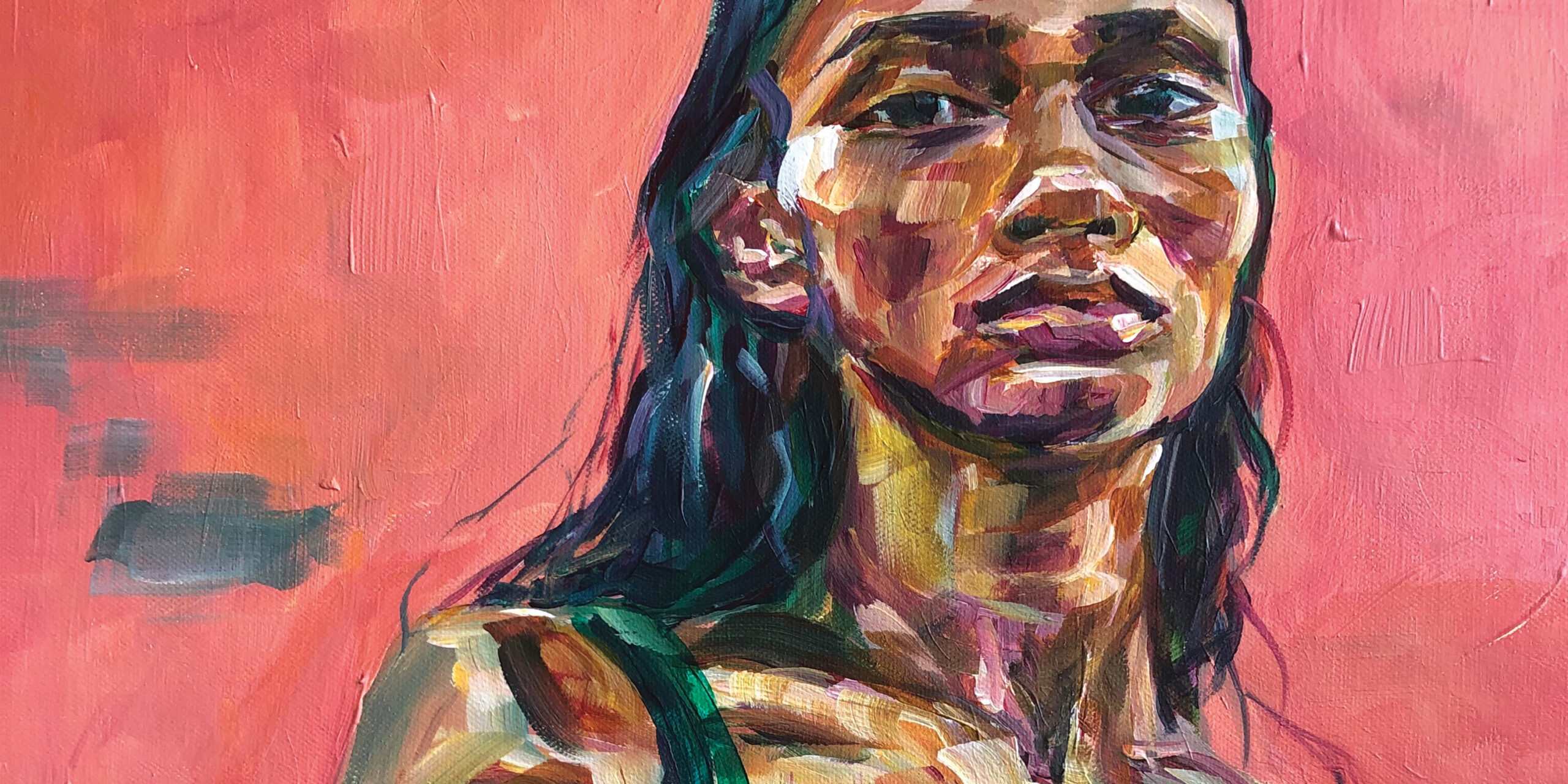
Ms. Zhang has loved drawing ever since she could hold a crayon. “My parents saw my little doodles and signed me up for art class,” she says. By first grade, she was taking weekly instruction alongside 17- and 18-year-olds.
“I was never very good at soccer,” she jokes. “Throughout the years, painting was the one thing for me that stuck.” These days, Ms. Zhang prefers painting people to objects and says she has been inspired by the activism she has seen on social media platforms. “Over the last year, I’ve been drawn to the art I’ve seen on Instagram related to the Black Lives Matter movement—paintings, murals, and even poetry.”
Ms. Zhang likes impressionism and the works of French painter Jerome Lagarrigue and American painter Michael Carson. She has dabbled in various mediums—watercolor, pencil, graphite, oil, and pastels—but favors acrylics and a technique she describes as free and relaxed. “I prefer art that’s not perfectly blended and realistic,” she says. “That may be why I tend to paint with messy and wide brushstrokes and a lot of color.”
During high school, Ms. Zhang thought about going to art school and even won acceptance to the prestigious Rhode Island School of Design. But she chose a career in medicine because of a desire to help others and her growing interest in health policy.
While researching medical schools, Ms. Zhang says, she looked for a curriculum that addressed cultural competence—being willing to recognize, accept, and interact with people whose cultures and belief systems differ from your own. Einstein offered what she was looking for.
“One of the things that matters most to me is not only training to become a physician, but also being part of the broader discussion of how we can address equity issues within healthcare,” says Ms. Zhang, who has been researching this issue for the past couple of years. As a health fellow at the New York Academy of Medicine in 2020, she worked on a study looking at the differences in how patients and physicians perceive one another. “At Einstein, it’s becoming the norm for students to learn about health equity, implicit bias [see “Prevailing Over Prejudice”], and microaggressions,” she says.
She also credits geography with bringing those issues front and center: “Einstein is located in the Bronx, so students are surrounded by very diverse communities here,” she says.
Now immersed in her third-year rotations, she tries to fit in time for painting, if only for a stress-relieving break. “If you don’t make time for things you enjoy doing, it can be easy to not do them,” she says. “More than ever, and partly thanks to the last year, painting feels essential to my well-being, and I’m grateful for it.”